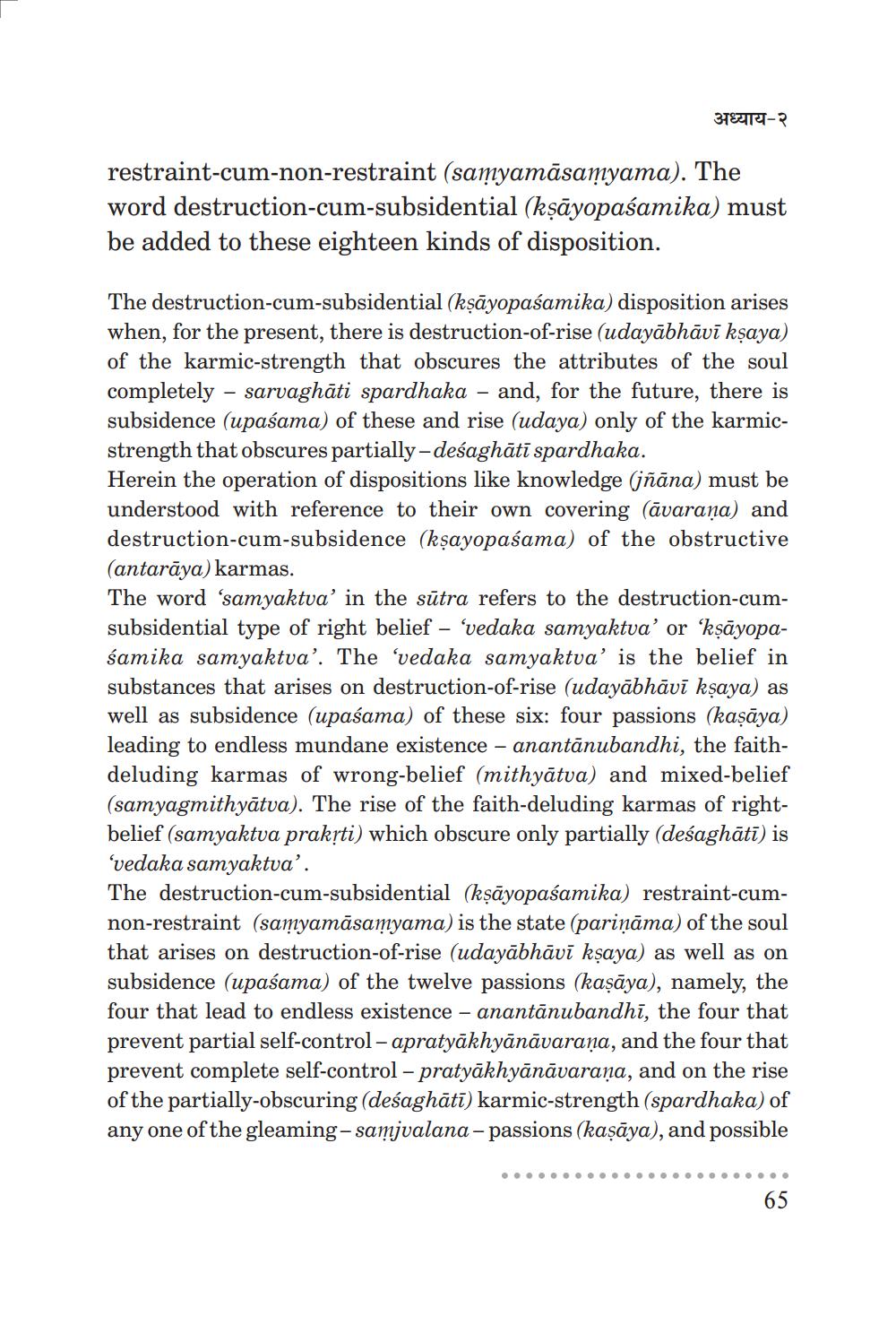________________
अध्याय-२
restraint-cum-non-restraint (samyamāsamyama). The word destruction-cum-subsidential (kṣāyopaśamika) must be added to these eighteen kinds of disposition.
The destruction-cum-subsidential (kṣāyopaśamika) disposition arises when, for the present, there is destruction-of-rise (udayābhāvī kşaya) of the karmic-strength that obscures the attributes of the soul completely - sarvaghāti spardhaka - and, for the future, there is subsidence (upasama) of these and rise (udaya) only of the karmicstrength that obscures partially-desaghāti spardhaka. Herein the operation of dispositions like knowledge (jñāna) must be understood with reference to their own covering (āvarana) and destruction-cum-subsidence (kşayopaśama) of the obstructive (antarāya) karmas. The word ‘samyaktva' in the sūtra refers to the destruction-cumsubsidential type of right belief - ‘vedaka samyaktva' or 'kṣāyopaśamika samyaktva'. The ‘vedaka samyaktva' is the belief in substances that arises on destruction-of-rise (udayābhāvi kşaya) as well as subsidence (upaśama) of these six: four passions (kaṣāya) leading to endless mundane existence - anantānubandhi, the faithdeluding karmas of wrong-belief (mithyātva) and mixed-belief (samyagmithyātva). The rise of the faith-deluding karmas of rightbelief (samyaktua prakrti) which obscure only partially (desaghātī) is fvedaka samvaktua'.. The destruction-cum-subsidential (ksāyopaśamika) restraint-cumnon-restraint (samyamāsamyama) is the state (pariņāma) of the soul that arises on destruction-of-rise (udayābhāvī kşaya) as well as on subsidence (upaśama) of the twelve passions (kaşāya), namely, the four that lead to endless existence - anantānubandhi, the four that prevent partial self-control - apratyākhyānāvaraṇa, and the four that prevent complete self-control – pratyākhyānāvaraṇa, and on the rise of the partially-obscuring (deśaghātī) karmic-strength (spardhaka) of any one of the gleaming - samjualana – passions (kaņāya), and possible
.
.
.
.
.
.
.
.
.
.
.
.
.
.
.
.
.
.
.
.
.
.
.
65




